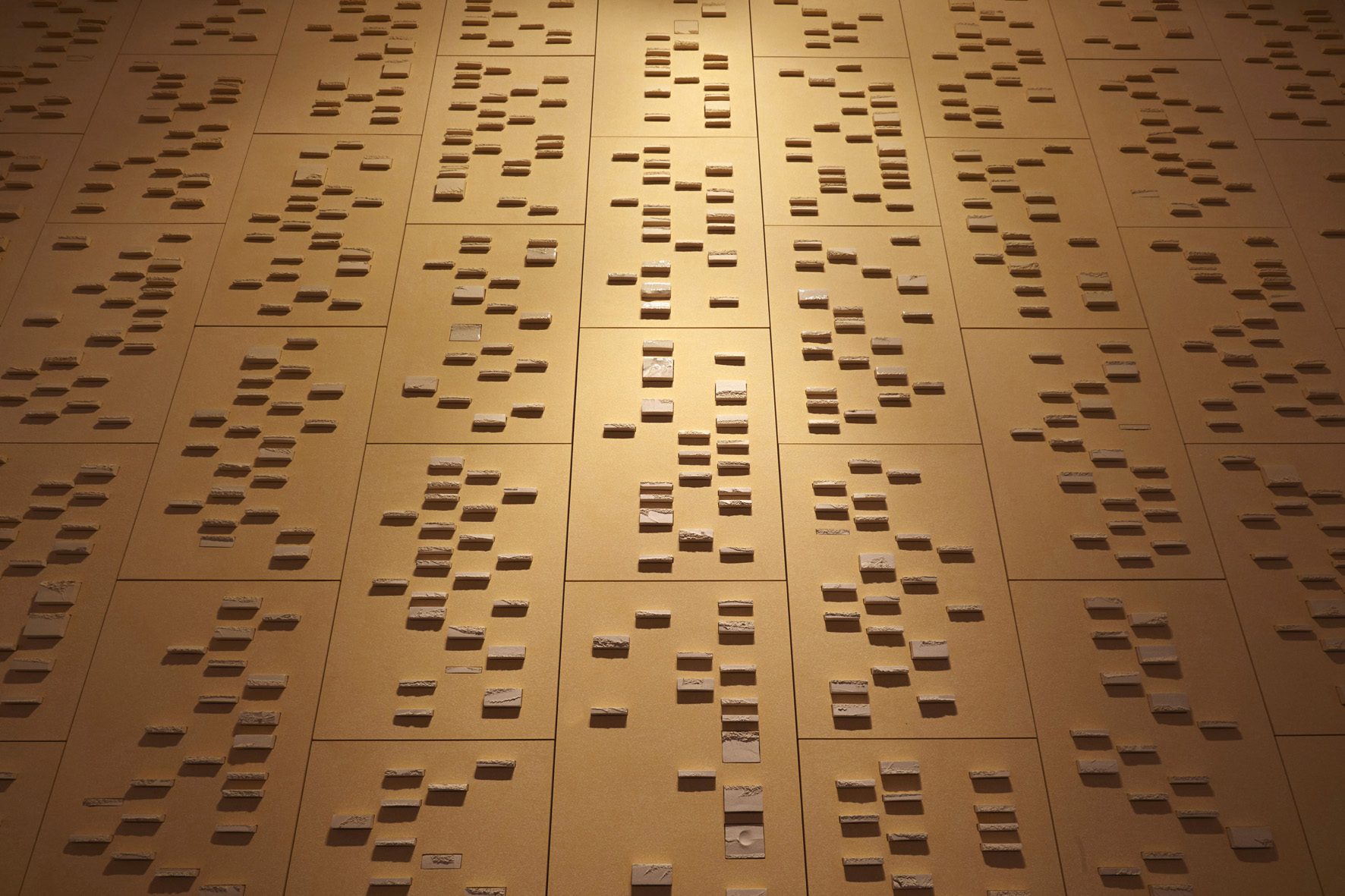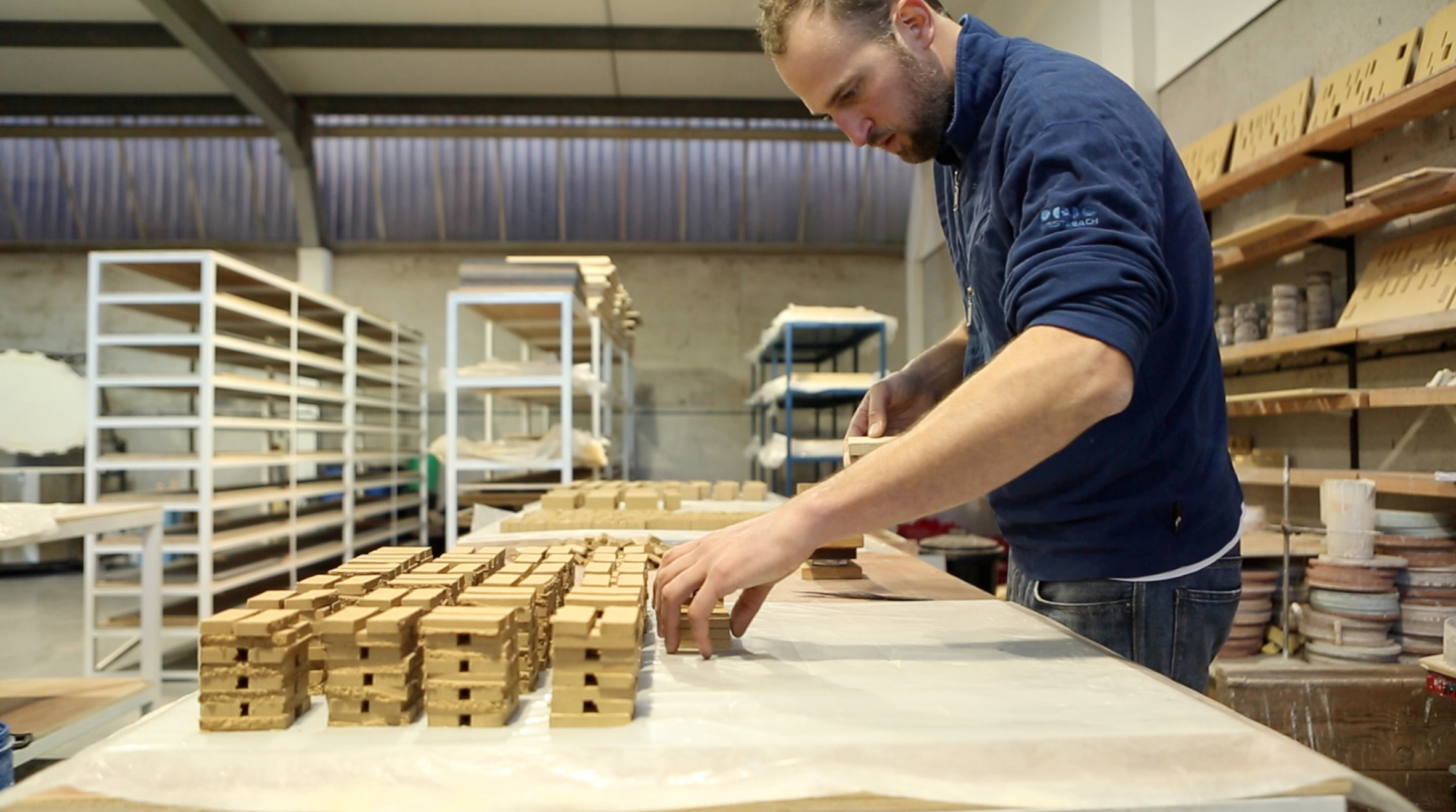mdby……JACOB VAN DER BEUGEL
Today we show you Jacob van der Beugel‘s work, who makes site-specific ceramic installations, and they are great !!!

How did you realize that what you wanted to dedicate your life to ceramics?
I realized that I expressed myself most eloquently through the use of clay. I felt it was my language and that I was instantly fluent. I have always had an affinity with ceramics even at an early age, but I realized its potency whilst studying the History of Art at University. I came to learn that many established and celebrated artists of the 20th century had used this medium as a form of experimentation, but were never fully committed to employing it as their material of choice. This is what I wanted and needed to do.
Do you know where you want to get, what is your goal in your work?
My goal is to celebrate ceramics as a force for depicting humanity. Having now completed several large ceramic installations I feel that every arena of contemporary life is open for my work. My goal is to keep finding new display opportunities and strive for conceptual clarity and to be culturally incisive.

Right now, you make large site-specific ceramic installations, what does ceramics mean for you now?
Ceramics comes from an ordinary overlooked common material, yet it can be transformed into the sublime, through human endeavor. It has an extraordinary ability to capture process, in particular, human process. For this reason it has a power, in my mind that other materials don’t. Its transformation from clay to precious object speaks about the striving of every person; it has a resonance with all, an instinctive and intuitive relationship with everyone who encounters it. This is what it has always meant to work with clay, and will continue to mean
What do you find the most challenging about your job?
The permanent desire to improve and to progress.
What did you learn as a trainee to Rupert Spira, and an assistant to Edmund de Waal?
With Rupert, I learnt the art of self-discipline and the need for self-scrutiny. In order to develop one can never assume that you can’t do any better. I learnt the art of being honest with your own output and never displaying something you are not satisfied with.
With Edmund, I discovered the multitudinous dimensions of ceramic display. Architecture and Ceramics could become fused to produce an all encompassing immersive experience..
Since that experience, what have you learned by your own?
I have learnt that to be obsessed is alright and that one’s career is a way of channeling one’s passions.

Was it hard to take the decision to begin your work on your own?
I found it extremely easy to start by myself. I have never wanted to work in the style of…….or affiliated to…… Whilst everyone has influences and their creative ideas are nearly always appropriations of others, it is important to have a truly distinctive voice. This becomes more difficult if one stays apprentice or assistant for too long. I also didn’t want to be financially reliant upon anyone but myself.
What did you learn from those companies that now you apply on your own studio?
If the question is what did I learn from companies I have worked with, then I would say that the architects I have worked with have a different take on your work. Their concern is not primarily the concept or overarching emotional response to the work, rather a desire to see the work enmeshed into the fabric of the building with sympathy, continuity and attention to detail.

What differentiates your ceramic work from others?
I like to think that I bother where the bothered can’t be bothered. That is to say I enjoy exploring all areas of conceptual nuances and endeavor to create everything with a very high degree of intensity.
In each site-specific ceramic installation, what is the most important for you to be shown?
I do not distinguish between various aspects of each work. There is no hierarchy of ideas or aesthetics. The work should be complete with every component relating to the other in a symbiotic visual display.


What is your dream for your career?
To keep being asked to make work for large public audiences.
Do you work alone?
Up until now I have worked alone. As my career progresses I have no problem with assigning certain parts of the process to others trained in my studio.
I have trained in a communal studio and I have found that one is unavoidably influenced by other peoples’ opinions. By taking these opinions out of the equation, i.e working alone, one is far more true to one’s artistic vision.

Which would be your ideal project?
Creating work for an organization that at its very core stems from human endeavor. A scientific institute, humanities organization to speak of a few.
Do you think pottery and design will disappear because of 3d printers?
I suspect that many industries will be affected by the emergence of 3d printers. This is not bad thing. It will mean that people need to look at the very thing that makes their practice unique and worthy. People will always crave and be drawn towards objects that speak directly to them. The handmade always has this in its armory against its perpetual war for justification.

How did you start to become known for your work?
I started to find a degree of success when I started integrating more conceptual elements into my work. I did a large piece that explored themes that run through 17th century Dutch Still Life’s. The resulting “Memento Mori” emboldened me.
What is the most difficult thing in your work? And the one you like most?
The most challenging aspect of my work is probably the exertion required on the part of the viewer to explore all the nuances and meaning latent within the work. It is only right that to extract meaning from anything; one should employ a certain amount of effort.
The aspect I like the most, is when this effort has been used the work starts to come alive in a subtle and profound way. Revealing meaning in a slow considered way is a far more powerful device than bludgeoning someone over the head with a message.

An advice for someone who is thinking about creating his own studio and about “ceramics world”….
Be prepared for disappointment and accept that you will struggle financially for some years before your work becomes sustainable. Always make what feels right to you and never what someone else feels is right. Try to find new audiences for your work and create your own market.